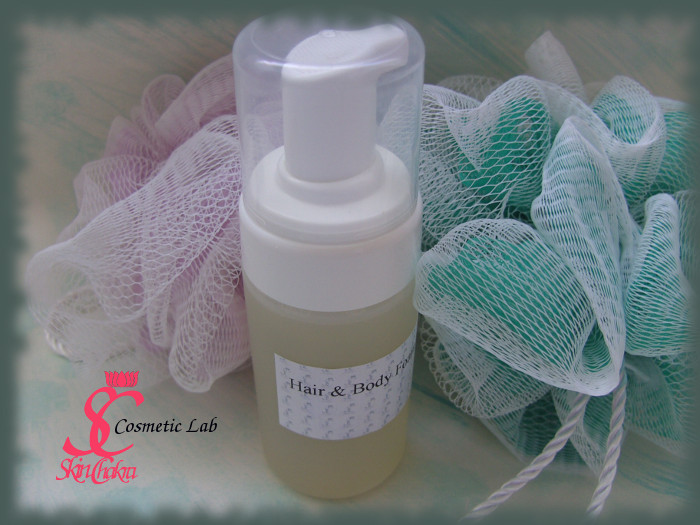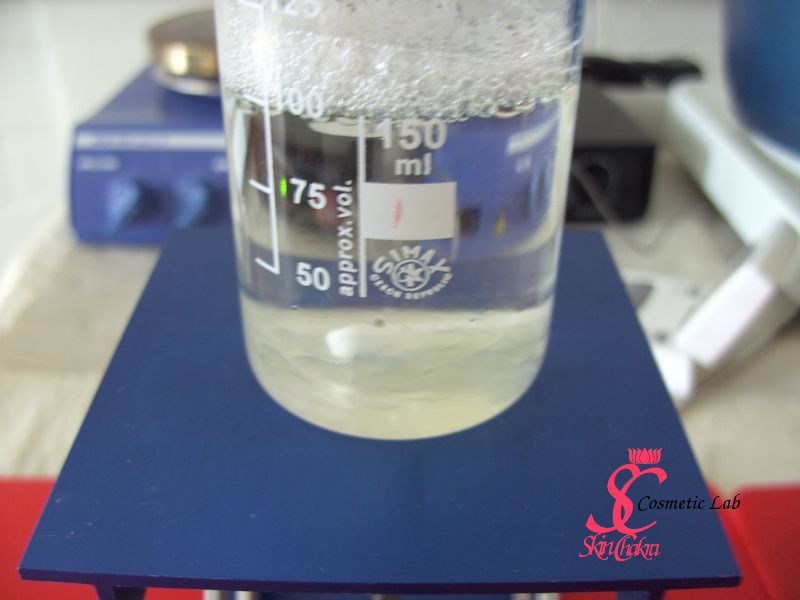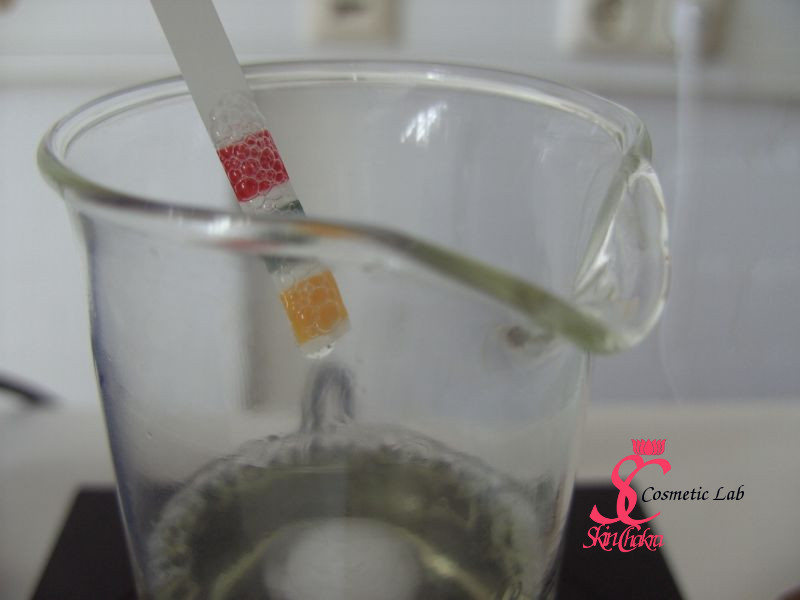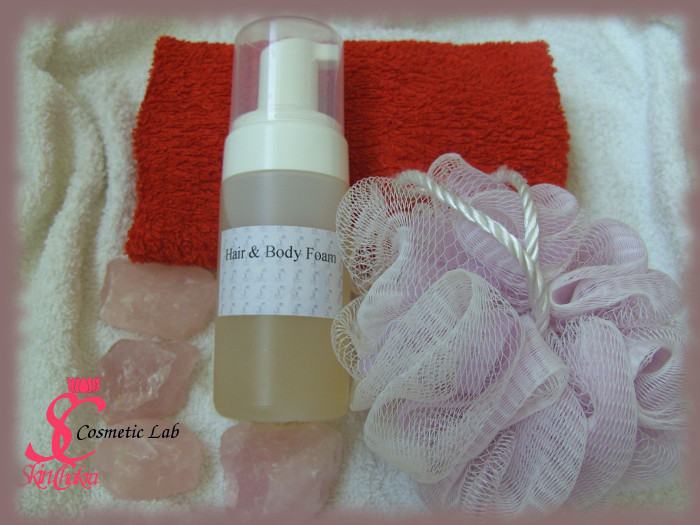
You belong very probably to the community who is sick of available shampoos and don't know what to do. Washing hair with a soap (shampoo bar) is a little bit tricky and not all love the after feel. Follow me then through this easy and fun tutorial to make your own shampoos in less than half an hours.
In this mild and natural shampoo, I avoid SLES and other surfactants that are not allowed in natural cosmetics. Obviously and because of this, the foam is not comparable to your supermarket shampoo but it is still quite satisfactory. It is quite interesting that you can apply this foam to both hair & body, and the foam for body is excellent. But the best part is that you know what you put in it and you prepare it fresh according to your demand. It's fun, easy and fast.
Basic principles:
Obviously you need at least one surfactant to prepare this shampoo. There are hundreds of surfactants available however I decided to apply cocamido propyl betaine which is a mild and naturally derived surfactant. It is quite often being applied in baby products and I recommend it for all cleansing formulations (facial, body and hair).
You can add other surfactants as well but in this recipe I make it simple and stay be betaine only.
As a cosurfactant and emollient, I apply our mild emollient blend which is a blend of coco-glucoside, glyceryl oleate. Both ingredients are plant derived and are approved for being applied in natural products.
You can add as much as you want plant extracts (obviously hydrophilic) and hydrosols. Since shampoo is a rinse-off product however, I wouldn't apply too much of those precious ingredients in a shampoo, but it's up to you, you can apply as much as 5% extracts and replace up to 100% of the water with a hydrosol. You can even apply plant infusions instead of plain distilled water, nettle, chamomile and calendula are only some examples.
Other valuable additives are glycerin and panthenol. Glycerin is a necessary humectant and panthenol is emollient and moisturizing (both hair and scalp) and improves the feel of shampoo and the hair volume after rinsing.
Then you need a preservative which is extremely important (for your safety and to inhibit bacterial growth) and please do not begin with arguments such as: it is only for me, I'll keep the shampoo in the fridge, I'll prepare only small batches etc.etc. I've applied Euxyl® PE9010 which is a blend of phenoxyethanol and ethylhexylglycerin, It is a mild but broad spectrum preservative blend and approved for natural cosmetics.
It's up to you to add any fragrance or essential oil or go ahead without any fragrance. If you apply high concentrations of a good scenting hydrosol, then you probably might avoid FOs or EOs but it is a personal preference.
Essential to this procedure and formulation is the foam dispenser. Applying the foam dispenser, you can create a fluffy foam with even low concentrations of surfactant and you don't need to worry about adjusting the viscosity. These are basic advantages. You can create very mild and gentle cleansing products with a fluffy pleasant foam.
Now that you're familiar with the basics, please go and have a look at our previous posts regarding foam and our past tutorials: mild skin cleansing foam, shower foam, as well as posts about hygienic manufacturing practice in a cosmetic lab and basic equipments for a cosmetic lab.
For this project (100 gr shampoo and shower foam) you'll need:
43,5% Freshly boiled distilled water (43,5 gr=100-56,5)
1,0% preservative: Euxyl® PE9010 (1,0 gr)
(occasionally) 1-2 drops of lactic acid
You'll need as well:
A glass beaker (250 ml) or other suitable container for mixing
Here we go:
One: Add all ingredients (except preservative and lactic acid) to a suitable beaker. Mix ingredients manually with a spatula or stirring rod or apply a magnetic stirrer or any other suitable stirrer.
Mix until you've a transparent and homogeneous liquid.

Two: Add preservative and mix for a few minutes.

Three: Measure pH with an indicator paper or an electrode attached to a pH-meter. Probably you don't need to add any lactic acid at all and the pH should be around 5,5. If you have a higher pH, then add 1 or 2 drops of lactic acid and measure the pH. The pH should be around 5-6.
Fill the foam in a foam dispenser and enjoy the fluffy foam and the silky feel.

I hope you've enjoyed this tutorial. Thanks for your visit.
You can purchase all the ingredients for this project @ SkinChakra® Online Shop.





